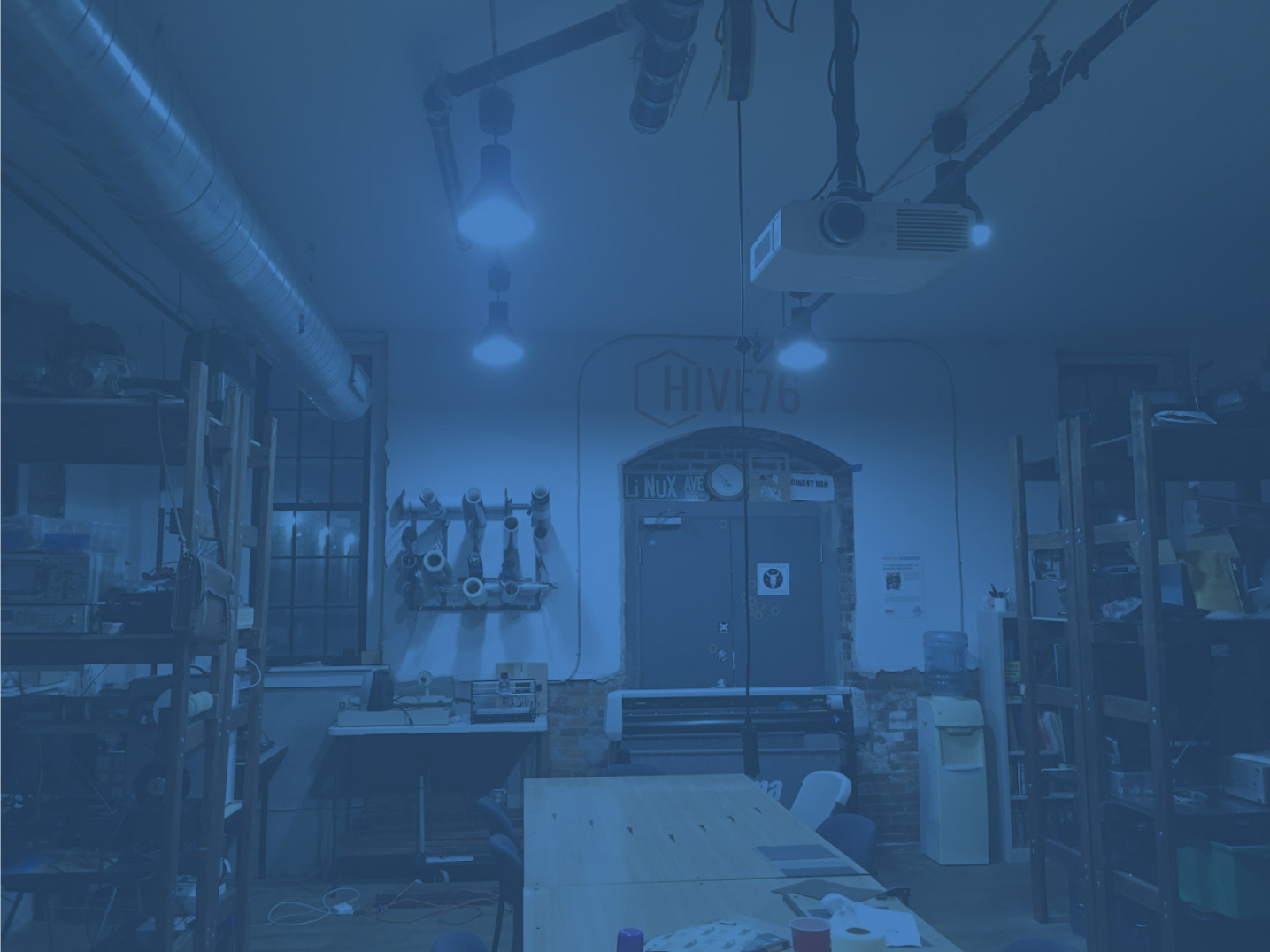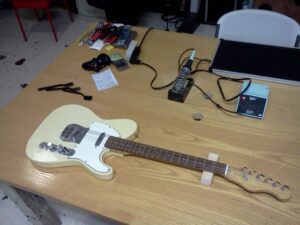
Last year, I purchased a 1970 Telecaster copy for $120 from Elderly Instruments. The frets were no good and much of the hardware was corroded, so it seemed like a good instrument to hone my repair skills on.
The first thing I did was take it to Hive and bounced ideas around with some folks. One thing I really love is that no matter what kind of project or idea you’ve got, there’s at least one or two people at an open house who have some expertise to share.
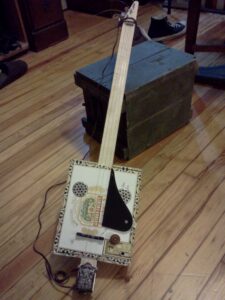
So I decided to give all the hardware a good cleaning and replace the bridge saddles – they were pretty sharp and very uncomfortable to rest my right hand on while playing. I also chose, somewhat foolishly, to refret the guitar when in fact a fret dress job was all that was needed. But if this was to be a learning project, I thought I should learn what I could. It also seemed like a big step towards building more of my own stringed instruments, which up until now have not had frets (such as my cigar box slide guitar).
I purchased some new saddles from the nice folks down the street at Bluebond Guitars and installed them right away. After doing some research on the refretting process, I learned that just about every luthier has their own method. I assembled my own procedure by printing out this guide and annotating it with notes from this series of videos and this forum post. Along the way I found that the general consensus on refret jobs is that it’s past the “DIY” border and well into the realm of “just get a professional to do it”. But whatever.
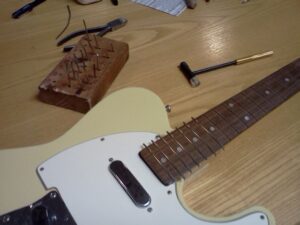
I ordered some fretwire, end nibbers and sanding supplies from StewMac, and used a piece of aluminum channel left over from Such and Such as my levelling tool. I tried to get really econo and skimp on a fretwire bending tool ($90), opting instead for this technique ($0). It took a few attempts to start producing nicely curved fretwire. Unfortunately, this resulted in a pretty wide range of fret quality.
As I worked, the fretboard acquired all sorts of scrapes, marks, burns and excess glue which really ought to help produce those vintage tones. The uneven curvature I was initially producing in the fretwire caused many of the upper frets to sit higher than those at the end of the neck. Sanding and levelling couldn’t quite alleviate this, so I’m now relying on a slight forward neck bow under string tension as a remedy. Real professional stuff.
With a fresh set of heavy strings, there is still some fret buzz. But not enough to drive me completely insane. While I might’ve been better off sending it to a professional guitar tech, it’s still quite a playable instrument – possibly even more so than before. And as intended, this job was a great learning experience.
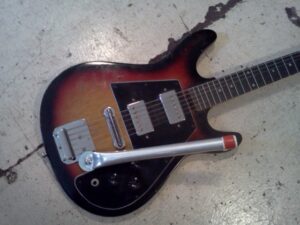
Another guitar project from the past month – this time a one-nighter – was adding a tremolo arm to the old Sears guitar that’s been floating around the space. It was already equipped with a tremolo bridge, it just required an arm to get those bends and squeals so key to our late-night, burned-out-on-my-project jam sessions.
An old piece of aluminum tubing cut to length, pressed flat at one end and drilled out to accommodate a 1/4″ bolt and fender washer did the trick nicely. I wish I’d come up with something a little more inventive, but this’ll do for now.
Come by the space on Thursday April 25 for our DIY Music Night as part of Philly Tech Week. You’ll be able to see and play with all of the music gadgets built at Hive, including guitars, synthesizers, amps, pedals, speakers, noise makers, plus a really cool karaoke machine.
